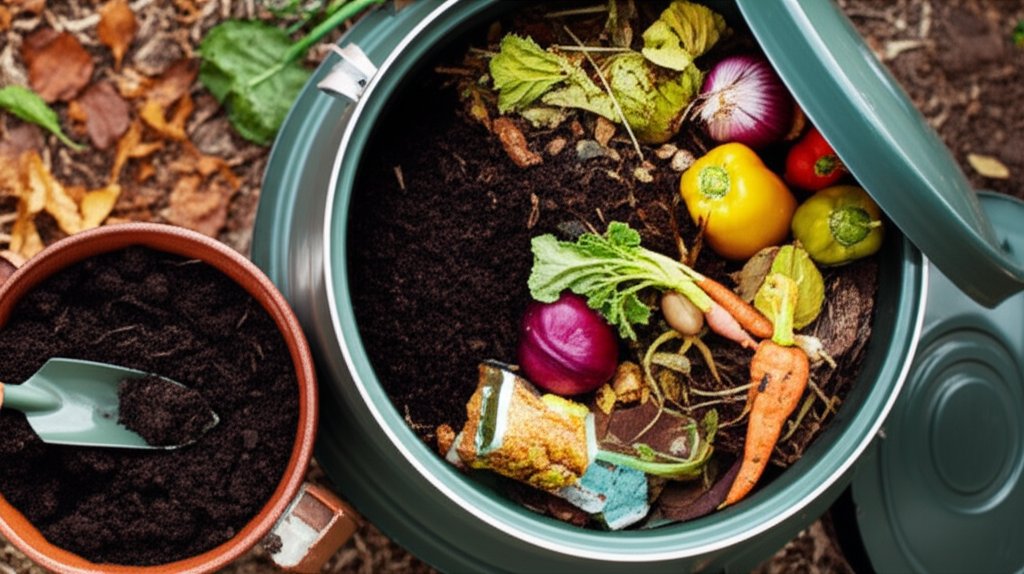Boost Your Fall Garden with Sustainable Compost Systems
Fall brings transformation to the garden. Plants reduce their growth, leaves accumulate, and cooler temperatures mark the harvest's conclusion. This season presents an ideal opportunity to enhance soil vitality by initiating or refining a compost system. Composting transforms organic waste into nutrient-dense matter that nourishes the garden while decreasing landfill contributions. This practice ranks among the most straightforward and eco-friendly methods to sustain garden productivity across seasons.
For those intrigued by composting or seeking to optimize an existing setup, autumn offers optimal timing. Abundant garden remnants and fallen leaves provide readily available, cost-free resources. This guide details the essentials for developing a compost system suited to your available space, financial constraints, and gardening objectives.
Materials Suitable for Composting
Effective composting hinges on the inputs selected. Optimal results arise from combining nitrogen-rich greens with carbon-rich browns. Greens supply nitrogen to fuel microbial activity, whereas browns provide carbon for structure and energy.
Nitrogen-Rich Greens:
- Fresh grass clippings from untreated lawns
- Fruit remnants, such as apple cores or banana peels
- Vegetable scraps, including potato skins and carrot tops
- Used coffee grounds and filters
- Spent tea bags, with staples removed
- Fresh prunings from healthy garden plants
Carbon-Rich Browns:
- Dry autumn leaves, shredded for faster breakdown
- Straw or hay from clean sources
- Shredded newspaper or plain cardboard, ink-free where possible
- Wood chips from untreated, pesticide-free sources
- Fine sawdust from natural lumber
- Dried corn stalks or similar plant residues
Materials to Exclude:
- Meat, bones, or dairy products, which draw pests and promote anaerobic decay
- Greasy or oily foods that hinder aeration
- Pet feces, due to pathogen risks
- Plants affected by disease or fungi
- Weedy materials bearing viable seeds
Maintaining this balance ensures a robust, odorless compost pile that decomposes efficiently.
Options and Costs for Compost Systems
Composting systems vary from no-cost arrangements to modest investments, aligned with your preferences.
- Open pile method: Requires no financial outlay beyond labor, ideal for spacious yards.
- DIY constructed bin: Materials like wood pallets or wire fencing cost $50 to $150.
- Commercial bin: Prices range from $80 to $200, based on capacity and features.
- Rotating tumbler: Expect $100 to $300 for a durable, easy-to-use model.
- Vermicomposting bin: Initial kits cost $80 to $150, including worms and setup.
- Multi-bin turning system: Construction with sturdy materials runs $200 to $400.
Budget-conscious gardeners benefit from beginning with a basic pile or homemade bin. Expansion becomes feasible as the advantages to garden health become evident.
Steps to Build and Maintain a Compost Pile
Establishing and sustaining a compost pile involves straightforward procedures.
-
Select an appropriate site. Choose a level area with adequate drainage, partial shade to prevent drying, and convenient access for additions and turning.
-
Establish a foundational layer. Position twigs, branches, or coarse browns at the base to promote air circulation and prevent sogginess.
-
Incorporate layers methodically. Alternate 6-inch layers of browns with 3-inch layers of greens, aiming for a 3:1 brown-to-green ratio by volume.
-
Maintain optimal moisture. The mixture should retain the consistency of a damp, wrung-out sponge; adjust with water if dry or browns if overly wet.
-
Aerate periodically. Employ a pitchfork or garden fork to turn the pile weekly during active seasons, ensuring even decomposition.
-
Track internal heat. Active piles generate warmth, often steaming upon turning, with core temperatures between 130 and 160 degrees Fahrenheit to kill weeds and pathogens.
-
Allow maturation time. Mature compost appears dark, crumbly, and earthy-scented, typically after 3 to 6 months of management.
Regular attention accelerates the process and yields superior results.
Resolving Common Composting Challenges
Compost systems occasionally encounter hurdles, but targeted adjustments restore balance.
-
Unpleasant smells: Often result from excess greens or poor drainage. Remedy by incorporating additional browns and aerating thoroughly to restore oxygen flow.
-
Excessive dryness: Introduce water gradually while turning, then cover with a breathable tarp to conserve humidity without trapping excess moisture.
-
Lack of heat generation: Boost with fresh greens or increase turning frequency to enhance microbial activity through better oxygenation.
-
Pest intrusion: Eliminate animal attractants like meat scraps; secure the setup with a lidded bin or enclosed design to deter rodents and wildlife.
-
Delayed breakdown: Accelerate by shredding or chopping bulky items into 1-inch pieces and verifying the greens-browns equilibrium.
Prompt interventions prevent escalation and maintain system efficiency.
Broader Advantages of Composting
Composting extends its value beyond soil improvement to foster environmental stewardship.
-
Waste volume reduction: Yard and kitchen organics constitute up to 30 percent of household refuse; diversion through composting lightens landfill burdens.
-
Methane emission mitigation: Decomposing organics in landfills release potent greenhouse gases; aerobic composting minimizes this impact.
-
Ecosystem enhancement: Nutrient-rich compost bolsters soil biodiversity, supporting earthworms, microbes, and pollinator habitats.
-
Educational opportunities: Involve family members in the process to illustrate natural cycles, waste management, and ecological responsibility.
These outcomes contribute to a more resilient home landscape and planet.
Winter Management for Fall Compost
Autumn-initiated compost requires ongoing care as temperatures decline.
-
Secure the pile with a tarp to shield from excessive precipitation or frost.
-
Balance incoming wet scraps with ample dry leaves or straw to prevent compaction.
-
Reduce turning to monthly intervals during dormancy, while continuing material additions.
-
For tumbler systems, perform rotations biweekly to distribute contents evenly.
-
In harsh winters, surround bins with insulating layers of straw or leaves to sustain internal warmth.
Such measures ensure readiness for spring applications, delivering vital nutrients to emerging plantings.
Implementing Your Compost Plan
Initiate composting with a setup compatible with your environment and routine. Leverage fall's plentiful leaves and trimmings to construct a well-balanced pile. Focus on consistent moisture, aeration, and material ratios to facilitate natural breakdown.
The resulting compost revitalizes soil structure, suppresses weeds, and amplifies plant vigor. This practice not only curbs waste but also cultivates long-term garden resilience. Select from piles, bins, or advanced methods to integrate sustainability into your fall gardening routine.



